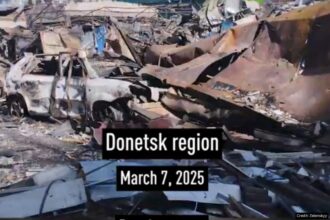As 2024 comes to a close, the global aviation sector is under intense scrutiny following a series of devastating plane crashes in December that claimed hundreds of lives. These tragedies have cast a shadow over an industry that remains one of the safest modes of transportation, raising questions about its trustworthiness and the measures in place to prevent such disasters.
On December 25, Azerbaijan was plunged into mourning after a plane crash killed 38 people and injured 29. The Azerbaijan Airlines Embraer 190, en route from Baku to Grozny, Russia, attempted an emergency landing in Aktau, Kazakhstan, before crashing just 3 kilometers from its intended landing site. Eyewitness footage showed the aircraft plummeting steeply and erupting into flames upon impact. The wreckage was found scattered across a grassy field, with the fuselage separated from the wings.
Russian President Vladimir Putin expressed his condolences to Azerbaijan’s President Ilham Aliyev over the downing of the commercial airliner, which occurred in Russian airspace on Christmas Day. While Putin described the event as a “tragic incident” and apologized, he refrained from directly acknowledging Russia’s responsibility. The crash happened while Russian air defense systems were responding to Ukrainian drone attacks in the region. Ukrainian President Volodymyr Zelensky accused Russia of spreading misinformation and called for a thorough investigation, suggesting the plane was struck by Russian air defense systems.
The Kremlin confirmed that the Azerbaijan Airlines jet, flight J2-8243, had attempted to land at Grozny airport several times before diverting across the Caspian Sea. Survivors reported hearing loud bangs before the crash, fueling speculation that the plane was hit by shrapnel from an air defense missile. Azerbaijani officials indicated the plane’s GPS systems may have been disrupted by electronic jamming. US defense officials and Ukrainian authorities have also suggested Russian involvement.
Azerbaijan observed a national day of mourning, with flags at half-mast, moments of silence observed nationwide, and ships and trains sounding their signals in tribute to the victims. Criminal investigations involving authorities from Azerbaijan, Kazakhstan, and Russia are ongoing to determine the precise causes of the incident.
On Sunday, December 29, South Korea experienced one of its worst aviation disasters. A Jeju Air Boeing 737-800 skidded off the runway at Muan International Airport, crashing into a concrete fence and bursting into flames. The crash resulted in 179 fatalities out of the 181 people onboard, leaving only two survivors, both crew members.
Initial investigations revealed that the aircraft’s front landing gear failed to deploy, and the control tower had issued a bird strike warning moments before the crash. Despite these warnings, the pilot’s distress signal came too late to avoid the catastrophic outcome. The crash’s aftermath saw thick plumes of smoke rising from the wreckage, and only the plane’s tail assembly remained intact.
South Korea declared a weeklong national mourning period, with leaders and citizens expressing condolences. Jeju Air’s president publicly apologized, and Boeing pledged full cooperation in the investigation while offering support to the bereaved families.
Not all incidents ended in tragedy. A Canadian flight experienced a critical emergency but managed to avoid fatalities, highlighting the industry’s ability to avert disasters under certain circumstances. While details remain sparse, this incident underscores the delicate balance between risk and safety in aviation.
These December crashes have reignited debates about aviation safety and the measures needed to restore public trust. While the aviation industry boasts a strong safety record, these incidents reveal vulnerabilities that require urgent attention. Key questions linger:
- Human Error: How can training and operational protocols be enhanced to reduce the risk of mistakes during critical moments?
- Technical Reliability: Are maintenance and monitoring systems robust enough to detect and address potential failures before they become catastrophic?
- Emergency Preparedness: Can industry-wide standards be improved to ensure better outcomes during emergencies?
The end of 2024 reminds us of the aviation sector’s dual nature—an industry that safely transports millions daily but can result in devastating losses when failures occur. Global aviation authorities, airlines, and manufacturers must collaborate to implement advanced technologies, stricter safety regulations, and more rigorous pilot training programs.
Efforts to reduce human loss in aviation incidents are not merely a technical challenge but a moral imperative. While no system can be entirely risk-free, striving for perfection remains the goal as the aviation sector moves into 2025, carrying the hopes and expectations of a global community demanding safer skies.


















